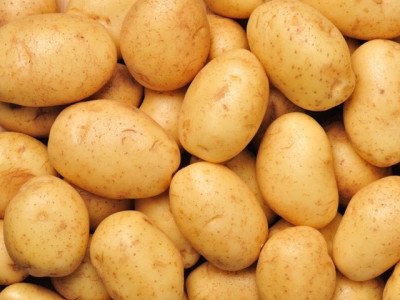Getting it right with sweet potatoes

You could say sweet potatoes are easier to grow than weeds. The important thing is to keep the planting material disease-free.
As propagation is by planting growing material, any virus on the parent material will be passed on to the next generation and there will be loss of vigour and much lower yields. You can sometimes see symptoms of chlorosis on leaves, but more often than not, symptoms are masked.
Contaminated material has hampered production of older varieties, especially in rural areas where planting material has been taken from the previous crop for many years. Fortunately, we can purify a variety with modern technology by growing a plant in the laboratory at a high temperature and then cutting off the growing tip.
This is then grown in a test tube before being planted out. In this way we can produce virus-free planting material. The ARC supplies clean runners to selected growers in various regions who then multiply this material under a hygienic regime and sell it to farmers for commercial production or to those wanting to start their own nurseries.
Many farmers in cool areas prefer to buy runners annually, however. In this way they can obtain runners from a warmer area and get started earlier. Those who use their own nurseries must take precautions to keep the area virus-free by placing the nursery far from the commercial lands with sufficient spraying to keep insect vectors at bay.
In cool areas you can plant the nursery half way through the season and then add frost cover near the end of winter to stimulate early growth. If you use clear plastic over wire hoops, you must guard against the beds getting too hot on warm days. The plastic can be opened during the day and closed in the late afternoon when there’s still enough warmth in the soil.
Maintaining sweet potatoes
Sweet potatoes are suited to summer growing conditions throughout the country and are not badly affected by high rainfall as many other summer vegetables are. Once they’re established, very little maintenance is needed.
If irrigation or rain is less than desired, it will simply mean a lower yield – not a crop failure. A healthy crop covers the area very quickly, making weed growth a minor problem. The crop is not very fussy with regard to the pH or soil type, but the latter can be a factor when it comes to harvesting and cleaning.
Clay adhering to sweet potatoes can make washing difficult as sweet potatoes have to be handled with more care than potatoes to prevent bruising. Their shelf life after lifting is not as good as potatoes and any cuts or damage can cause them to rot rather quickly.
Marketing sweet potatoes
By planting as early as possible after the last expected frost in cold areas, you can start marketing earlier. It’s a good idea to plant successive crops over a couple of months to harvest at the correct stage. Increase the yield by leaving the sweet potatoes in the ground for longer, although many will then become too large to market.
Factories can use larger roots and even prefer them. This is why processors try and plant as soon as possible and leave the sweet potatoes in the ground for as long as possible. Inspect the crop frequently as harvesting time draws close to determine when they are best for marketing.
Related news
 Do you know how healthy your ‘soil skin’ is?
Do you know how healthy your ‘soil skin’ is? The crucial link between soil health and optimal, sustainable crop yield is well established. Dr Neil Miles, a soil scientist with the South African Sugarcane
 No-till can be practical for vegetables
No-till can be practical for vegetables No-till helps farmers work with nature, with massive benefits in the quality and health of soils and water use, sustainability and economics.
 Getting to the bottom of cavity spot mysteries
Getting to the bottom of cavity spot mysteries Two species are the most common culprits – P. sulcatum and P. violae, each of which can be dominant in different areas.